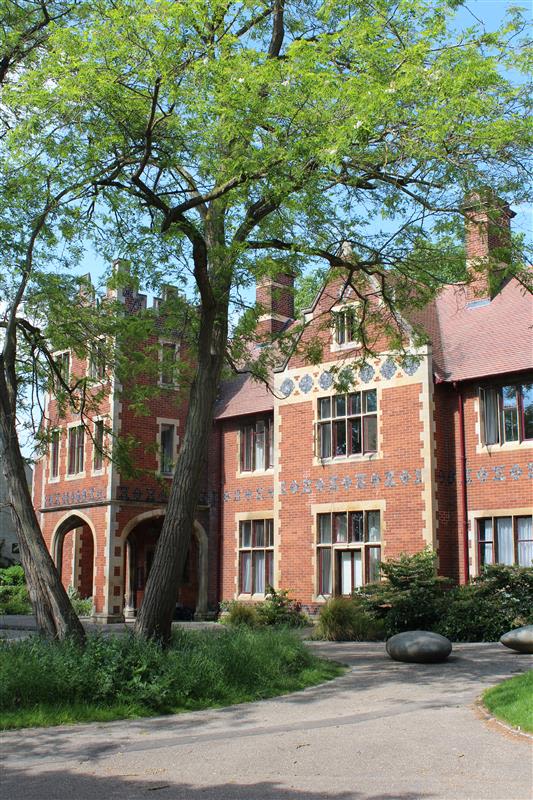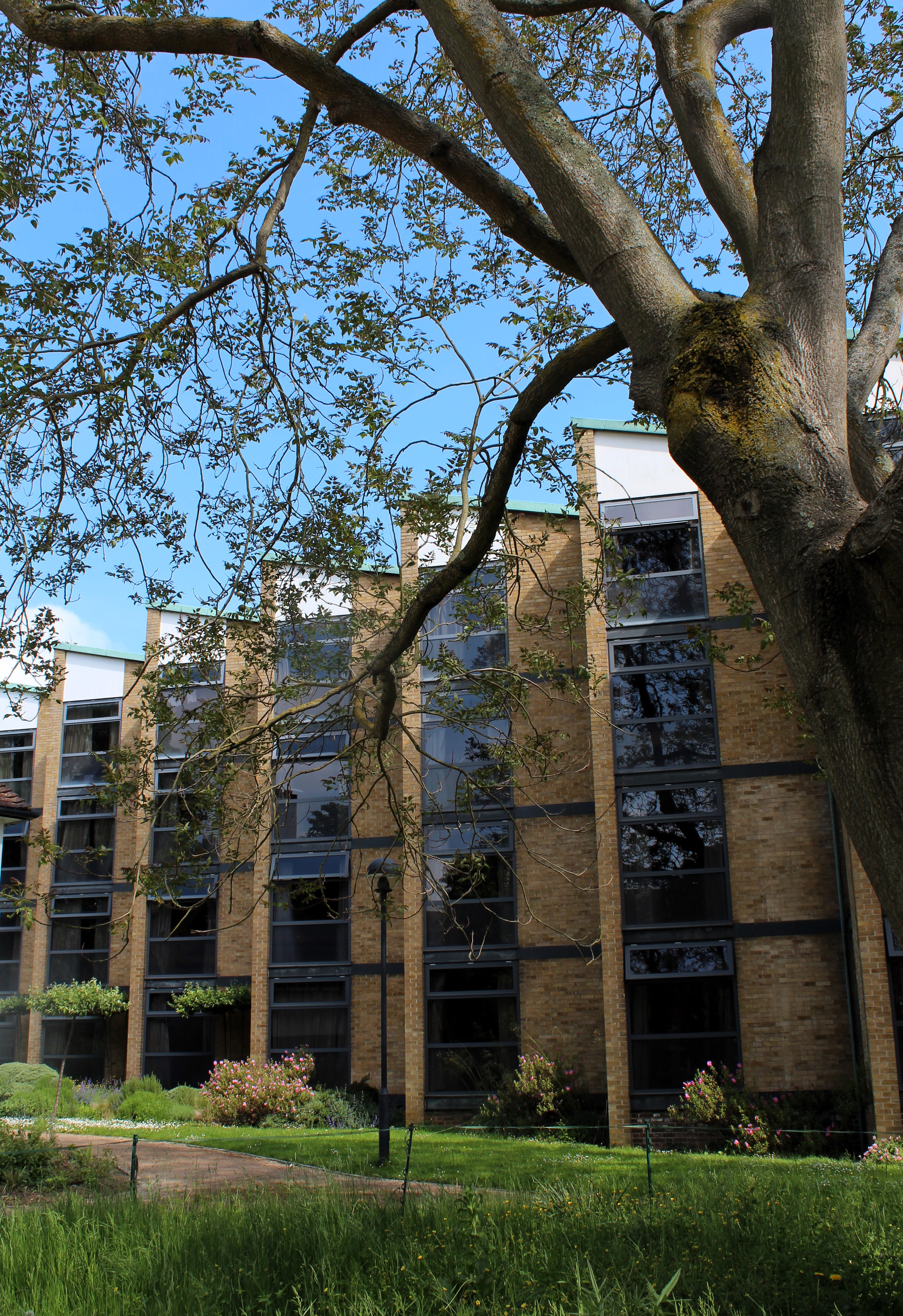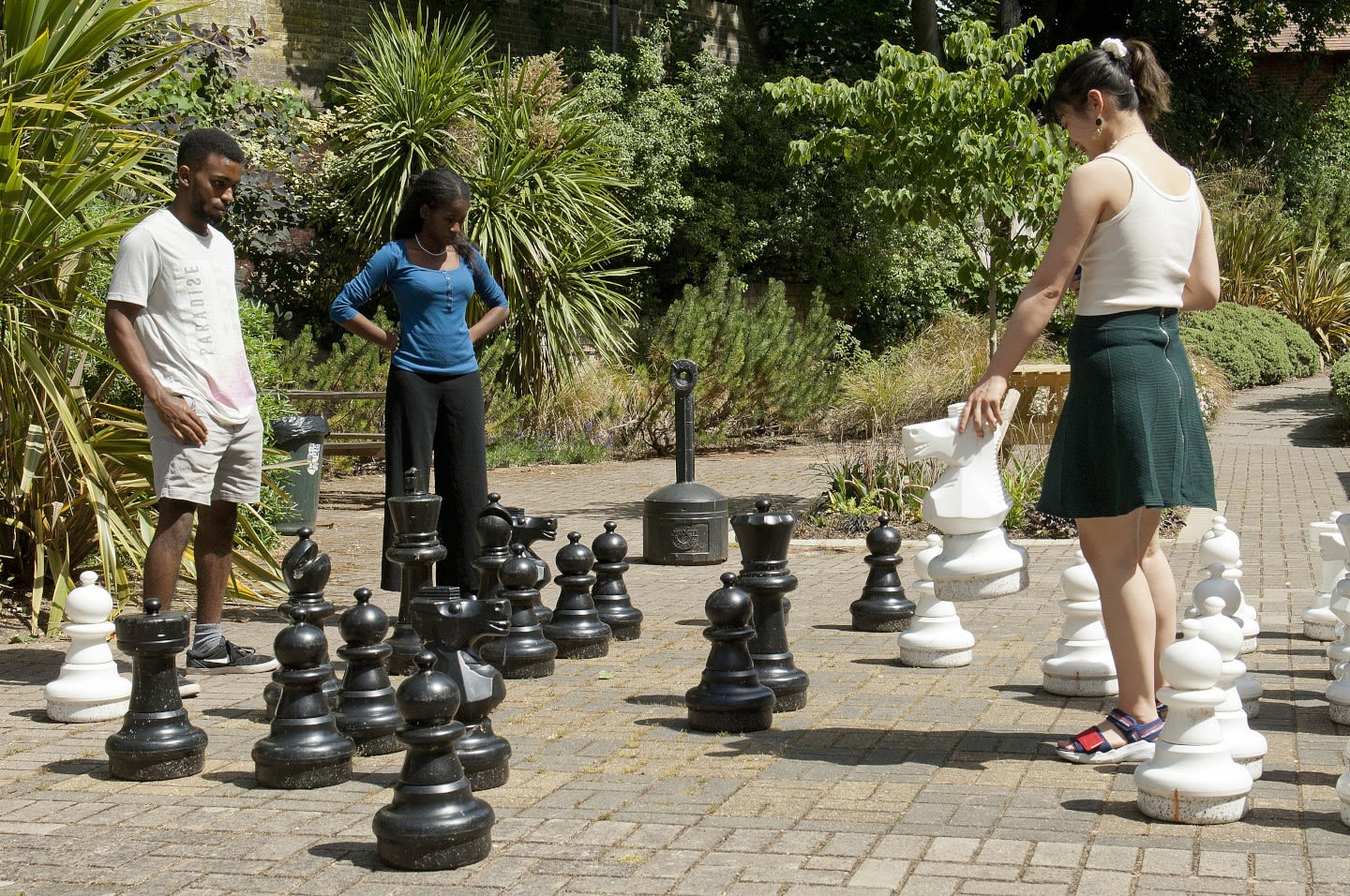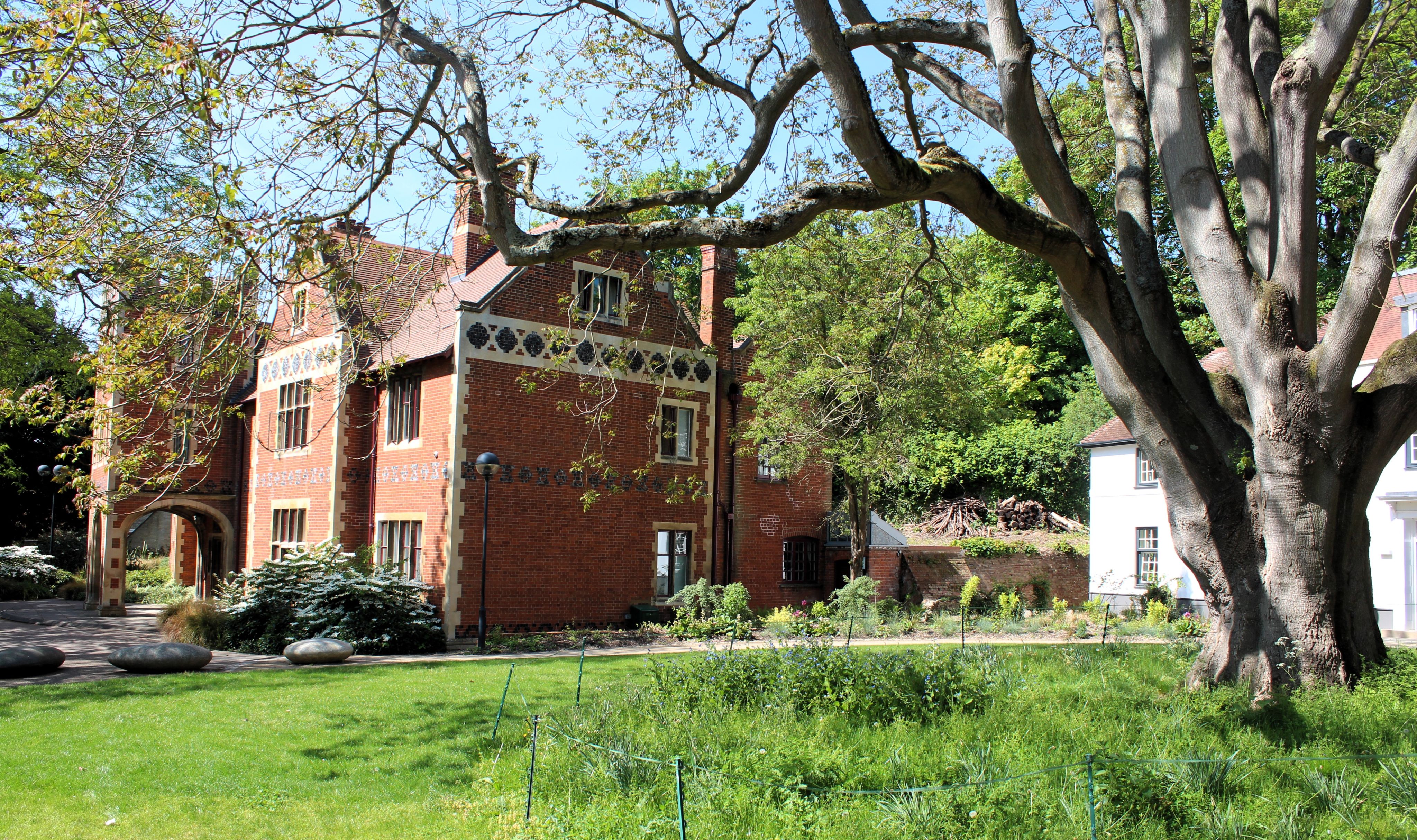The hidden gem of Clare College
By Volker Heine, Emeritus Fellow
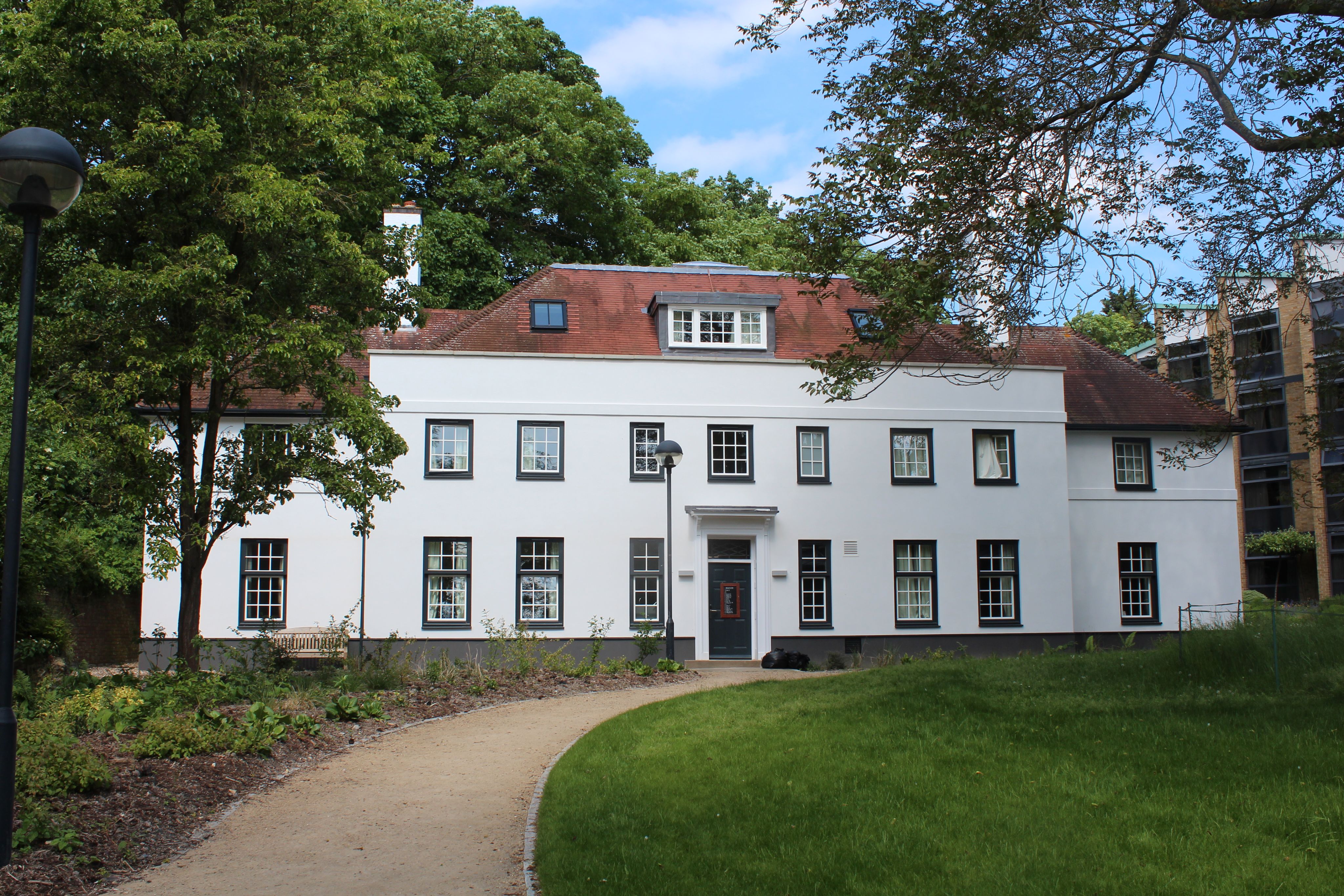
Nestled slightly apart from the main College site, Castle Court (also known as the Colony) has often been described as one of the most visually appealing parts of the College. Acquired in stages, beginning in 1392 and later in 1466 with the purchase of Castle End Farm, the site has housed Clare students since 1926. Today, it’s a cherished space—both for its beauty and its unique character—though opinions are mixed on its slight distance from the main College. While some students relish the independence, others rue the extra early start required to make it to 9am supervisions or meals back in Old Court.
Perhaps the most famous building is Castlebrae house at the centre of the site, built by Scottish twin sisters Agnes Smith Lewis and Margaret Dunlop Gibson (b.1843) whose story is truly remarkable. They were self-taught formidable linguists in many ancient languages, who married Cambridge academics and lived at Castlebrae (one couple to the left of the entrance and the other couple to the right!). After both sisters were bereaved they went on a journey trekking across the desert to St Catherine’s monastery at Mt Sinai where they discovered one of the very earliest copies of the gospels, written in Syriac (although the monks, being Greek Orthodox, could not read it). To this day, rumour has it that the ghost of Agnes roams the halls of Castlebrae, her spirit lingering long after her death in 1926.
Until the 1960s, some Castle Court students lived with landladies who managed their own homes or rented them from the College, providing breakfast as part of the accommodation arrangement. Gradually, this practice was phased out, and by the late 20th century, all rooms were allocated directly by the College, complete with gyp facilities.
Over the years, the older houses around the site were modernised and brought into the College system. These include Braeside, the secondary mansion on the site, as well as the houses along Chesterton Lane— Etheldreda, St Giles, St Andrew’s, and Hillside. Today, these properties offer students variety and comfort, just a stone’s throw away from the city centre.
In 1958, the architect David Robert designed a pair of joined hostels with a much admired ‘fluted’ facade. Originally, these hostels each housed a landlady who served breakfasts to the students. Today, the breakfast rooms have been repurposed into a lounge and three smaller meeting spaces for various student groups. The joined buildings are collectively referred to as ‘Castle End,’ a nod to the original Castle End Farm which stood on the site.
"Clare’s ‘third court’ continues to hold a special place in the hearts of Clare students.”
Castlebrae
Castlebrae
Castle End
Castle End
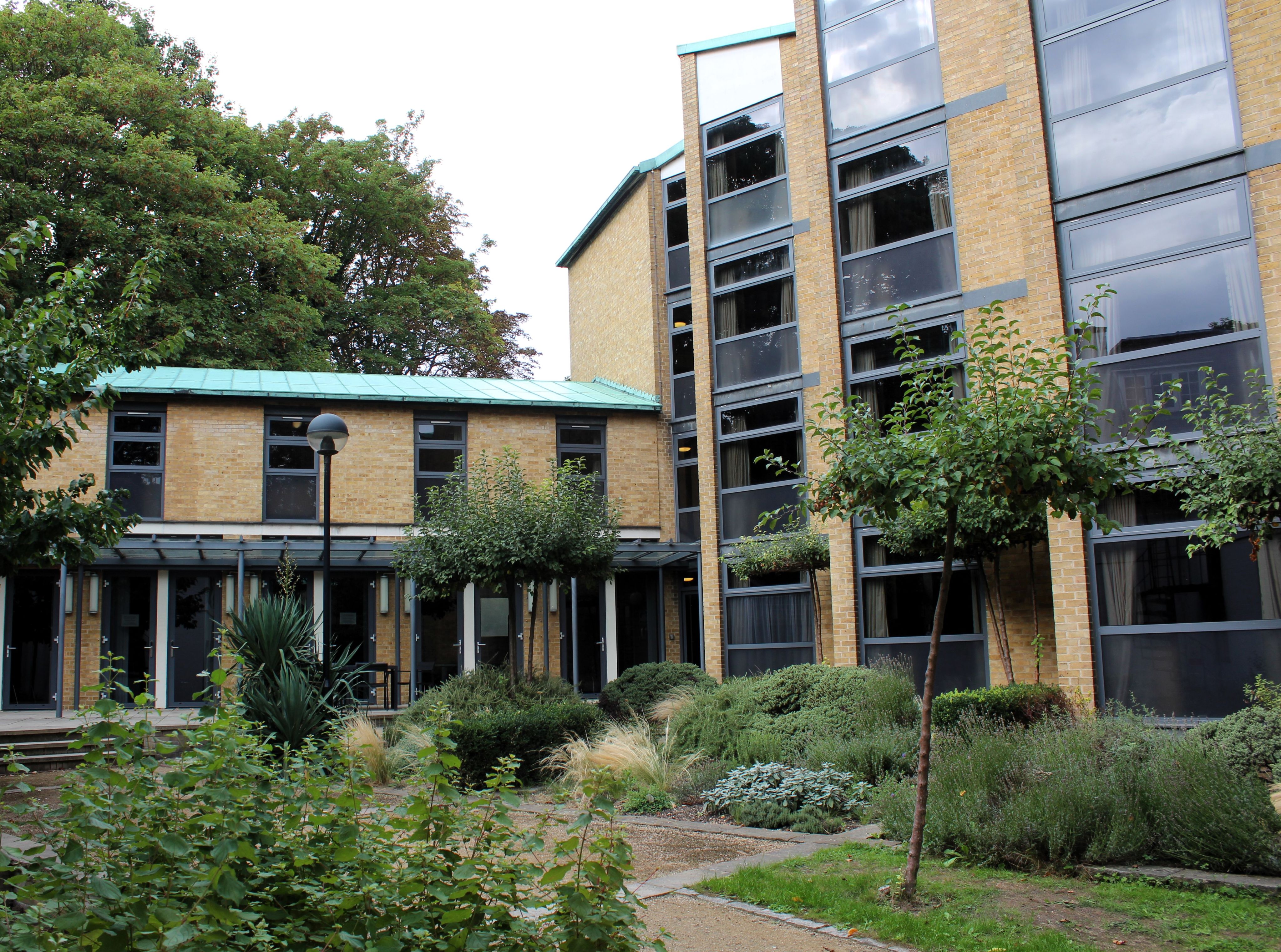

The Court expanded further in the 1980s with the construction of Castle House, a modern accommodation block complete with a multipurpose seminar room. Though initially surrounded by a somewhat disjointed landscape, the whole site underwent a comprehensive transformation in the 2000s, led by Clare Fellow Volker Heine and the then Bursar Donald Hearn.
Castle House’s courtyard was enhanced with new seating, planting, and an outdoor chessboard with giant chess pieces, and bicycle racks were added to support Cambridge’s favourite mode of transport.
Castle House Courtyard
Castle House Courtyard
The landscaping project was then extended to reshape Castle Court into a cohesive and welcoming environment. The larger scope of this project necessitated external landscape designer Robert Myers to come on board. Under his direction, access to Etheldreda and White Lodge were sensitively improved, a large stone terrace and steps was added in front of the three activity rooms at the top of Castle End, with an area of planting below it.
The lawn between Castlebrae, Braeside, and Castle End was reimagined as a village green, complete with improved lighting and pathways around a prominent Robinia pseudoacacia tree, while broad steps and a mini-woodland glade connect Castle House with the houses along Chesterton Lane. Finally, behind Braeside, students established a vegetable garden, now continued by Clare Growers.
Castlebrae lawns
Castlebrae lawns
Recent refurbishments have further enhanced the site. In 2008, Castle End underwent a major upgrade, and Braeside followed in 2023, earning a special category award at the University of Cambridge Green Impact Awards.
Be it under its moniker of the Colony or its formal title of Castle Court, ‘Clare’s third court’ continues to hold a special place in the hearts of Clare students. Whether it’s the allure of its history or the charm of its architecture set in park-like surroundings, this unique corner of Clare stands as a testament to the close-knit, friendly community of Clare College.


